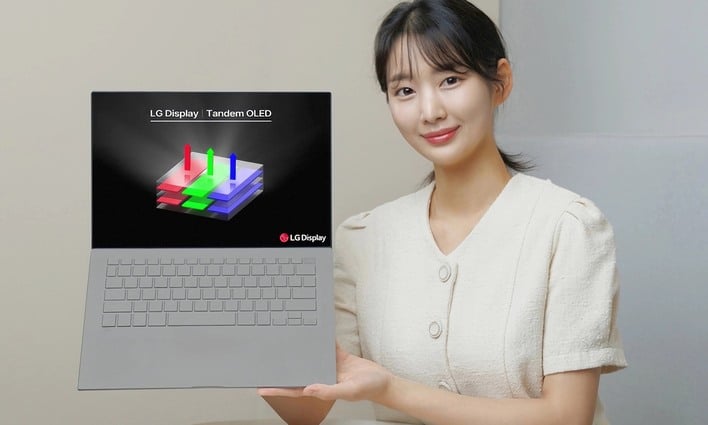
If you’ve ever directly compared modern LCDs and OLEDs, you’ll know that the biggest problem with most consumer OLEDs is that they just don’t get that bright. This is a problem for users who want high contrast for sharp HDR highlights, but the reason is simple — the blue pixels will die too fast. LG Display claims to have finally solved this problem, however, with a new design that achieves radically-improved brightness without risking its blue pixels, and the explanation for how they achieved it is complex.

The idea of a fully phosphorescent OLED, or PHOLED, isn’t a new concept, but it has been a ‘holy grail’ of display technology for a long time, and according to Korean tech site ETNews, LG Display has indeed “succeeded in developing an OLED panel based on blue phosphorescence.” This is exactly as exciting as it sounds in terms of R&D, but in terms of “going out and buying a new display,” don’t get too excited just yet.
As a result, LG itself says it is not looking at bringing this technology to market quite yet, and the reason is simply because LG isn’t sure it can make tandem PHOLEDs in a profitable fashion. If they do come to market, they’ll probably show up in smaller displays at first, like phones, tablets, and car displays. After all, Apple’s already using a tandem OLED (but not PHOLED) in its new iPad Pro.
LG is using a material developed by a US-based firm called Universal Display. For its part, Universal Display’s stated goal is actually to have PHOLEDs that don’t rely on tandem panels. If that’s possible, we could truly be looking at the next major evolution in OLEDs for monitors and TVs. For now, we’ll just have to content ourselves with super-bright displays on laptops and tablets.